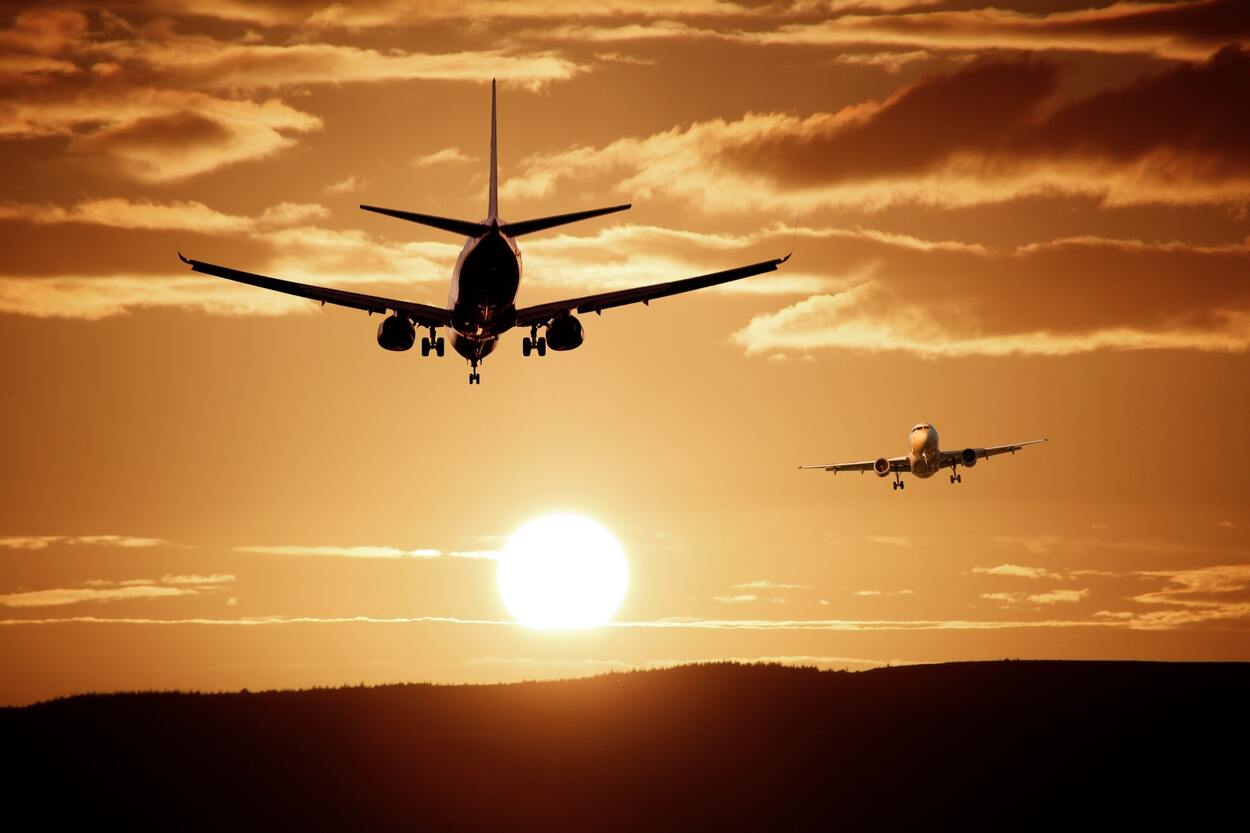ISABEL RUBIO ARROYO | Tungsteno
The mythical DeLorean from the movie Back to the Future achieved one of the most ambitious goals in the history of mankind: time travel. While the vehicle’s need for plutonium fuel provided exciting plot points in the story, at the end of the first part of the saga the time machine has been upgraded with a futuristic Mr. Fusion generator able to use banana peels and other garbage as fuel… and away they fly! This science fiction idea, converting organic waste into energy for sustainable transport, is now closer to becoming a reality, and more and more sectors are attempting to capitalise on the concept.
A team of researchers has developed a new biorefining process that harnesses waste to produce sustainable aviation fuel (SAF) to reduce the carbon footprint of the aviation sector. The finding has been published in the prestigious Proceedings of the National Academy of Sciences, one of the highest impact scientific journals. In theory, the secret to producing SAF lies in using the untapped energy from food waste and other wet waste such as animal manure and sewage. Researchers at the US National Renewable Energy Laboratory, the universities of Dayton and Yale, and the Oak Ridge National Laboratory claim that SAF is identical to fossil jet fuel, but with "a carbon-negative twist". In other words, using it would supposedly remove more CO₂ from the atmosphere than is emitted.
This fuel would reduce net greenhouse gas emissions by up to 165%, according to the authors of the study. The figure comes from the reduction in carbon emitted by aircraft plus the emissions saved when food waste is diverted from landfill. 17% of the world's total food available to consumers in 2019 went to waste, according to the United Nations (UN).

Between 8% and 10% of global greenhouse gas emissions are associated with food that is not consumed, according to the UN. Credit: Wikimedia.
Food waste carries social and environmental implications. "Every year, millions of tonnes of food waste is hauled to landfills across the country. Once there, it rots and produces methane, a greenhouse gas over 20 times more potent than carbon dioxide," explains the US National Renewable Energy Laboratory. Between 8% and 10% of global greenhouse gas emissions are associated with food that is not consumed, both through losses in the production and transport processes and at the final consumption stage, according to the UN. The authors of the SAF study say they have found a way to disrupt this process and create a more sustainable fuel that could be blended in higher concentrations—up to 70%—with conventional aviation fuel.
The huge global impact of aviation emissions
Achieving environmentally-friendly aviation fuel is one of the challenges of the 21st century. Although the aviation industry and some official bodies assert that the aviation sector is responsible for around 2% of global greenhouse gas emissions, a report by the Stay Grounded network puts the figure at between 5% and 8%. "Apart from carbon dioxide, planes produce other harmful elements such as methane, ozone, soot, contrails and induced cloudiness, with a greater climate impact than CO₂," explains Ecologistas en Acción, an organisation that is part of the Stay Grounded network.
Someone flying from Lisbon to New York and back generates approximately the same level of emissions as the average person in the European Union when heating their home for a whole year, according to the European Commission. It points out that if global aviation were a country, it would be among the world’s top ten emitters. And the situation could get even worse. Major companies in the international aviation industry such as Airbus forecast annual growth rates of 4.3% in the coming decades.
If the predictions come true, by 2050 greenhouse gas emissions from aviation could be four to eight times the current level, according to Stay Grounded. Before the coronavirus pandemic, the International Civil Aviation Organization also predicted that by 2050 emissions from international aviation could triple compared to 2015.

A report by the Stay Grounded network estimates that the aviation sector causes between 5% and 8% of global greenhouse gas emissions. Credit: Pixabay.
The dream of flying more sustainably
In a hyper-connected world, millions of people travel by air every day. The researchers who produced the report The Degrowth of Aviation advocate significant reductions in flying to mitigate the environmental impact of this mode of transport. "There is no alternative," they say. The report analyses a number of proposals, such as banning close proximity flights, reducing short- and medium-haul flights that can be made by train, and putting a moratorium on the expansion or construction of airport infrastructure.
In the meantime, researchers around the world are searching for a magic formula that will allow us to fly more sustainably. Whether or not the ultimate solution lies in food waste, we do not yet know. For now, major industry players such as Southwest Airlines are already collaborating with researchers at the US National Renewable Energy Laboratory and the other organisations involved in the SAF project.
"If our refining pathway is scaled up, it could take as little as a year or two for airlines like Southwest to get the fuel regulatory approvals they need to start using wet waste SAF in commercial flights," says Derek Vardon, a scientist at the lab and one of the paper's authors. While this fuel is "not a silver bullet", for the researcher it is "a piece of the puzzle that could make a significant dent in an industry notoriously hard to decarbonize."
· — —
Tungsteno is a journalism laboratory to scan the essence of innovation. Devised by Materia Publicaciones Científicas for Sacyr’s blog.
